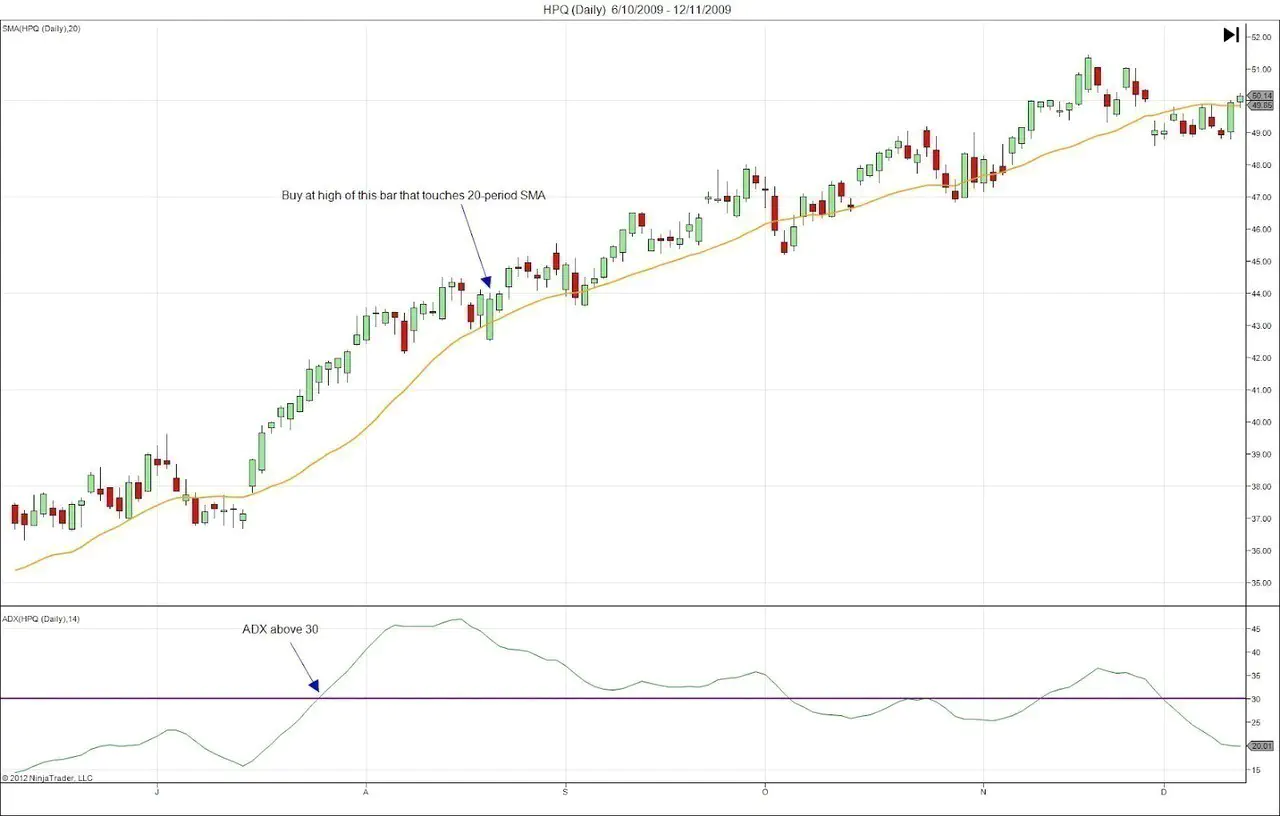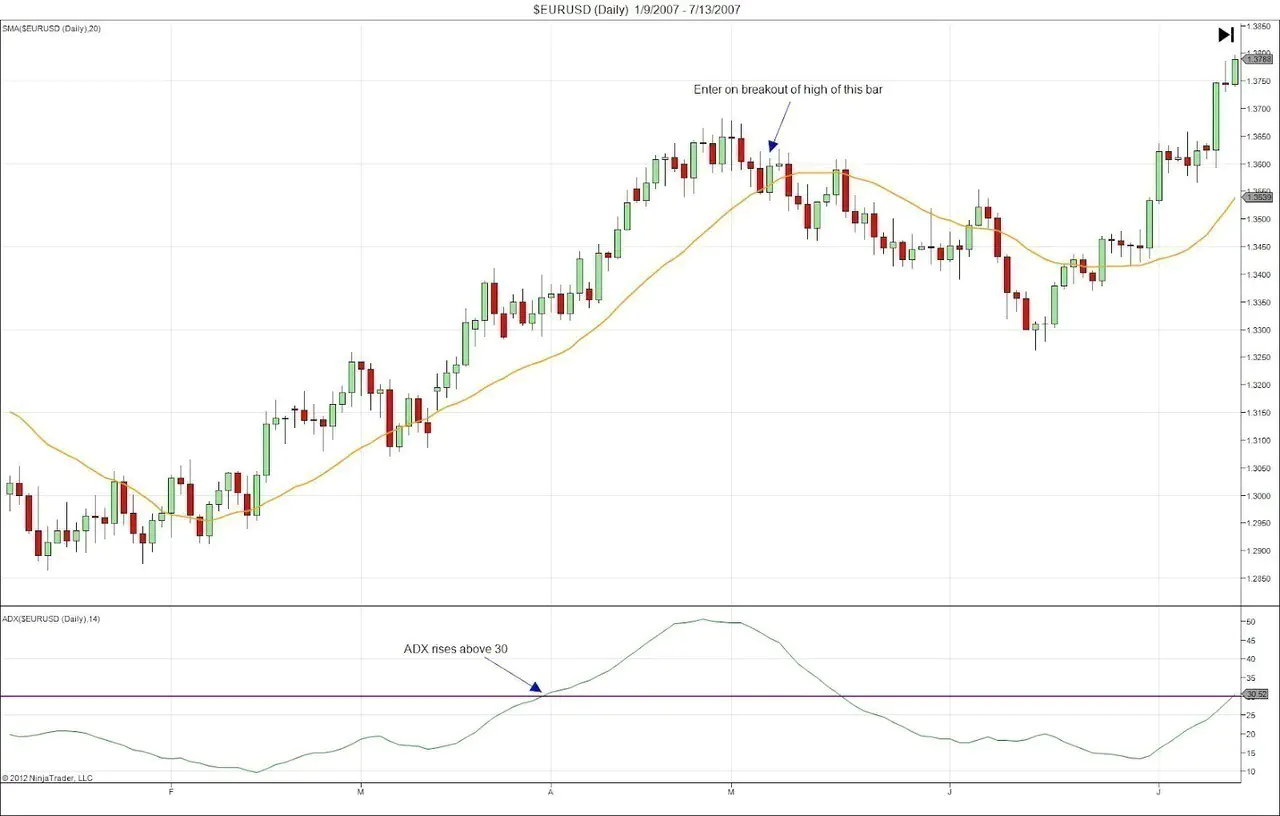The Holy Grail Trading Setup
By Galen Woods ‐ 3 min read
The Holy Grail is a trading setup that makes use of the ADX indicator to identify strong trends before trading a pullback to the moving average.
The Holy Grail is, of course, not the Holy Grail. Linda Bradford Raschke and Larry Connors named it so for its simplicity. As both of them are prominent traders, this trading strategy is hugely popular.
ADX Lovers: Day Trading, Range Trading
Trading Rules For The Holy Grail
Rules For Long
- 14-period ADX is initially above 30 and rising
- Prices retrace down to 20-period simple moving average (SMA)
- Place buy order at the high of the bar that touches 20-period SMA
Rules For Short
- 14-period ADX is initially above 30 and rising
- Prices retrace up to 20-period SMA
- Place sell order at the low of the bar that touches 20-period SMA
The Holy Grail Trading Examples
Winning Trade - Bullish
This is a daily chart of Hewlett-Packard (HPQ on NYSE). The bottom panel shows the ADX rising above 30. ADX measures trend, so this criterion finds markets that are trending strongly.
In this trending stock, we saw a pullback to the 20-period SMA. We entered at the high of the bar that touches the SMA. The trend continued beyond this chart and gave a profit potential of around $9.00 per share.
The ADX only served to confirm what prices showed. The series of 13 bullish bars was all that any trader needed to see the upward trend. The marked bar offers a great entry point as the day gapped down before rebounding up within the day. An extremely bullish sign.
Losing Trade - Bullish
This is a daily chart of EUR/USD spot forex.
Again, the ADX rose above 30 to show a strong bullish trend. Then, prices retraced to the 20-period SMA to present a Holy Grail long setup. We entered on the high of a bullish reversal bar. However, the market hit our stop two days later.
This entry looked good with a nice bullish reversal bar as the signal bar. Moreover, it looked like a possible failed downside breakout of the trading range at the top.
However, the increasing number of dojis showed a lack of buying pressure before the pullback. Also, before the marked reversal bar, there was a bearish outside bar. After entering the trade, the entry bar became a doji which was a signal for more conservative and nimble traders to exit earlier to limit their losses.
Review - The Holy Grail Trading Setup
The Holy Grail trading strategy finds retracements within healthy trends. You don’t need the ADX to see strong trends, as they are hardly subtle. However, the ADX keeps new traders out of trouble and provides a convenient way to scan for trending stocks.
With regards to finding trends, the criterion of ADX > 30 has two drawbacks. First, a high ADX can mean that the trend is overdone and may reverse soon. Traders might enter at the worst possible timing. Second, gradual and protracted trends may unfold entirely without the ADX ever crossing above 30. This will result in missing some trades.
Street Smarts: High Probability Short-Term Trading Strategies
If you like the ADX indicator, check out these articles for a unique way to use this powerful indicator.

